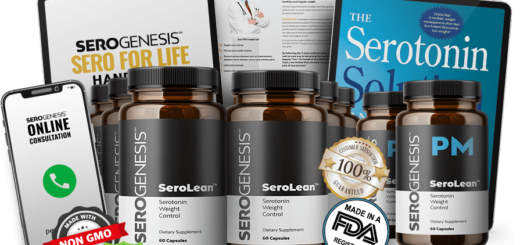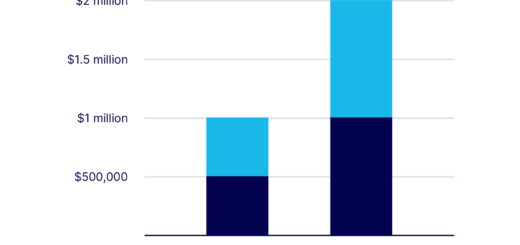Maximizing ROI with Email Marketing
Looking to boost your ROI? Look no further than email marketing. It’s a cost-effective and efficient way to reach and engage with your target audience, driving conversions and increasing revenue. In this article, we will explore the various aspects of email marketing, from automation and campaign optimization to the best practices for newsletters. Discover how you can maximize your return on investment with the power of email marketing.
Maximizing ROI with Email Marketing
Email marketing is a powerful tool that allows businesses to connect with their audience, build relationships, and drive sales. When done correctly, it can have a significant impact on ROI and contribute to the overall success of a marketing campaign. In this article, we will explore the benefits of email marketing, how to measure ROI, and various strategies to maximize your email marketing efforts.
Benefits of Email Marketing
One of the key reasons why email marketing is so effective is its ability to reach a large audience at a relatively low cost. Compared to traditional forms of marketing, such as print or TV ads, email marketing allows you to engage with your audience directly and with a higher level of personalization. Additionally, email marketing provides a higher ROI compared to other marketing channels, making it a highly cost-effective tool for businesses of all sizes.
Email marketing also gives you the opportunity to build relationships with your subscribers. By sending targeted and relevant content to their inbox, you can establish trust and credibility, leading to increased brand loyalty and customer retention. With the right strategies in place, email marketing can help you nurture leads, convert prospects into customers, and drive repeat purchases.

Measuring ROI in Email Marketing
Measuring the return on investment (ROI) of your email marketing campaigns is crucial to determine their effectiveness and identify areas for improvement. There are several key metrics that you can track to measure the success of your email marketing efforts.
-
Open rate: This metric measures the percentage of recipients who opened your email. A high open rate indicates that your subject line and sender name were compelling enough to catch their attention.
-
Click-through rate (CTR): The CTR measures the percentage of recipients who clicked on a link within your email. It indicates the level of engagement and interest generated by your email content.
-
Conversion rate: The conversion rate measures the percentage of recipients who took a desired action after clicking through your email. This could include making a purchase, filling out a form, or subscribing to a service.
-
Revenue generated: Tracking the revenue generated from your email marketing campaigns is essential to measure the direct impact on your bottom line. By attributing specific sales or conversions to email campaigns, you can calculate the ROI and determine the success of your efforts.
To accurately measure and analyze these metrics, it is essential to use an email marketing service provider that offers robust tracking and reporting capabilities. By regularly monitoring these metrics and making data-driven decisions, you can optimize your email marketing campaigns for maximum ROI.
Email Marketing Strategy
To maximize your ROI with email marketing, it is important to develop a well-thought-out strategy. Here are some key steps to consider when creating your email marketing strategy:
Understanding Your Target Audience
Before you begin crafting your email campaigns, it is crucial to have a clear understanding of your target audience. Conduct market research and utilize customer data to identify their needs, preferences, and pain points. By understanding your audience’s demographics, interests, and motivations, you can tailor your email content to resonate with them and drive engagement.
Setting Clear Goals and Objectives
To effectively measure the ROI of your email marketing efforts, it is essential to establish clear goals and objectives. Whether your objective is to generate leads, increase sales, or drive website traffic, setting specific and measurable goals will help you track your progress and determine the success of your campaigns.
Building an Email List
The foundation of successful email marketing is a high-quality and engaged email list. There are several strategies you can employ to grow your email list, including offering valuable lead magnets such as e-books or exclusive discounts, implementing pop-up forms on your website, and leveraging social media to encourage sign-ups. Remember to obtain explicit permission from your subscribers to comply with email regulations and maintain a clean and engaged email list.
Segmentation and Personalization
Segmenting your email list based on various criteria, such as demographics, purchase history, or engagement level, allows you to send targeted and relevant content to different segments of your audience. Personalizing your emails by addressing recipients by their name and tailoring the content to their specific interests can significantly increase open and click-through rates. Use data analytics and automation tools to efficiently segment and personalize your email campaigns.

Creating Effective Email Campaigns
Crafting compelling email campaigns is crucial to capture the attention and interest of your subscribers. Here are some key elements to consider when creating your email campaigns:
Crafting Compelling Subject Lines
The subject line is the first thing your subscribers see when they receive your email. It plays a crucial role in determining whether they open your email or not. To maximize open rates, craft subject lines that are concise, interesting, and evoke curiosity. Experiment with different approaches, such as asking a question, using numbers or emojis, or creating a sense of urgency.
Designing Visually Appealing Emails
The visual design of your emails can greatly impact the overall user experience and engagement. Use eye-catching graphics, colors, and fonts that align with your brand image. Ensure that your emails are mobile-responsive and optimized for different devices and email clients.
Creating Engaging Email Content
The content of your emails should be valuable, informative, and engaging to keep your subscribers interested and encourage them to take action. Provide them with useful tips, industry insights, or exclusive offers. Use storytelling techniques and compelling copywriting to make your emails memorable and shareable.
Incorporating Call-to-Actions
Include clear and prominent call-to-action buttons in your emails to guide your subscribers towards the desired action. Whether it’s making a purchase, signing up for an event, or downloading a resource, a strong and persuasive call-to-action can significantly increase conversion rates.
Optimizing for Mobile Devices
With the increasing use of smartphones and tablets, optimizing your email campaigns for mobile devices is no longer optional but necessary. Ensure that your emails are responsive and display correctly on various screen sizes. Use mobile-friendly templates and avoid using small font sizes or extensive paragraphs.
Email Automation
Email automation is a powerful feature that allows you to streamline and personalize your email marketing campaigns. Here are some benefits of email automation:
Benefits of Email Automation
-
Time-saving: Email automation allows you to set up and schedule emails in advance, saving you time and effort in manually sending individual emails.
-
Personalization: Automation tools enable you to segment your audience and send targeted emails based on their behavior or preferences, resulting in higher engagement and conversion rates.
-
Nurturing leads: Automation sequences can be set up to deliver a series of emails that educate and nurture leads, guiding them through the sales funnel.
-
Increased efficiency: By automating repetitive tasks such as welcome emails, abandoned cart reminders, or re-engagement campaigns, you can optimize your workflow and focus on strategic initiatives.
Types of Automated Emails
There are several types of automated emails that you can implement to increase engagement and conversion rates:
-
Welcome emails: These emails are sent automatically to new subscribers to introduce your brand, provide valuable information, and set expectations for future email communications.
-
Abandoned cart emails: If a user adds items to their cart but doesn’t complete the purchase, automated emails can be triggered to remind them and offer incentives to encourage them to complete the transaction.
-
Drip campaigns: These automated email sequences deliver a series of emails over a set period, nurturing leads, providing relevant content, and guiding recipients through the customer journey.
-
Re-engagement campaigns: If your subscribers have been inactive for a certain period, automated emails can be sent to re-engage them and encourage them to take action.
Determining the Right Automation Tools
When choosing an email automation tool, consider factors such as ease of use, scalability, integration options, and analytics capabilities. Popular email automation tools include Mailchimp, ActiveCampaign, and HubSpot. Evaluate your specific needs and budget to select the tool that best fits your requirements.
Personalizing Automated Emails
While automation allows you to send mass emails, personalization is key to maximize engagement and ROI. Use merge tags to insert the recipient’s name or other relevant information into the email content. Leverage behavioral data and segmentation to send personalized recommendations, targeted offers, or content based on their previous interactions.
Email Campaign Optimization
To ensure the success of your email marketing campaigns, continuous optimization and improvement are crucial. Here are some key areas to focus on for email campaign optimization:
Testing and Experimentation
Performing regular tests and experiments is essential to identify what resonates with your audience and optimize your campaigns accordingly. Test different subject lines, email content, calls-to-action, and sending times. Use A/B testing to compare the performance of different variables and make data-driven decisions.
A/B Testing
A/B testing, also known as split testing, involves creating multiple variations of an email and sending them to different segments of your audience. By comparing the performance of each variation, you can identify which elements have the highest impact on open rates, click-through rates, and conversions. Test different variables such as subject lines, content length, visuals, and CTA placement.
Optimizing Send Times
The timing of your email campaigns can have a significant impact on their success. Test different sending times and analyze the response rates to determine the optimal time for your specific audience. Consider factors such as time zones, industry standards, and the behavior patterns of your target audience.
Improving Email Deliverability
Email deliverability refers to the ability of your emails to reach your subscribers’ inboxes rather than being marked as spam or going to the promotions tab. To improve deliverability rates, follow these best practices:
-
Use a reliable email service provider to ensure your emails are delivered to the inbox and not flagged as spam.
-
Obtain explicit permission from your subscribers and maintain a clean and engaged email list. Remove bounced or inactive email addresses regularly.
-
Follow email marketing best practices and comply with CAN-SPAM regulations to avoid being marked as spam by email clients.
-
Monitor your sender reputation by regularly checking email deliverability reports and taking prompt action to resolve any issues.
Analyzing and Learning from Data
Data analysis is crucial to improving the effectiveness of your email marketing campaigns. Regularly review the key metrics, such as open rates, click-through rates, and conversion rates, to identify trends and areas for improvement. Use this data to make informed decisions, optimize your campaigns, and tailor your content to better resonate with your audience.
Email Marketing Tools
To effectively implement your email marketing strategy and optimize your campaigns, utilizing the right email marketing tools is essential. Here are some types of tools that can enhance your email marketing efforts:
Email Service Providers
Email service providers (ESPs) help you manage and send large volumes of emails. Popular ESPs include Mailchimp, AWeber, and SendinBlue. These tools offer features like email automation, list management, and analytics to streamline your email marketing workflows.
Email Marketing Platforms
Email marketing platforms, such as HubSpot and Marketo, provide comprehensive solutions for creating, managing, and optimizing email campaigns. These platforms offer advanced features, including advanced segmentation, personalization, and integration with other marketing tools.
Email Analytics Tools
To measure the success of your email campaigns and gather valuable insights, email analytics tools are crucial. Google Analytics, for example, allows you to track traffic and conversions from your emails, providing data on the effectiveness of your campaigns.
Marketing Automation Tools
Beyond email automation, marketing automation tools like ActiveCampaign or Pardot offer features that extend beyond email marketing. These tools allow you to automate and streamline various marketing processes, including email campaigns, lead nurturing, and customer relationship management.
Building a Successful Newsletter
Newsletters are an effective way to engage with your audience, share valuable content, and drive traffic to your website. Here are some key considerations when building a successful newsletter:
Designing a Newsletter Template
Consistency is key when it comes to newsletters. Design a visually appealing and professional template that aligns with your brand identity. Use a responsive design that adapts to different devices and screen sizes. Consider including your logo, branding colors, and a visually appealing header to make your newsletter recognizable and memorable.
Choosing Relevant and Valuable Content
To keep your subscribers engaged, it is crucial to provide them with valuable and relevant content. Regularly share industry insights, expert tips, or exclusive offers that align with their interests and pain points. Incorporate a mix of different content types, such as blog articles, videos, infographics, or case studies, to cater to different preferences.
Frequency and Timing of Newsletters
Finding the right balance between sending regular newsletters and overwhelming your subscribers is crucial. Consider the preferences and expectations of your audience when determining the frequency of your newsletters. Test different sending times and days of the week to identify when your subscribers are most likely to engage with your content.
Growing Newsletter Subscribers
Growing your newsletter subscribers is an ongoing process. Consider implementing strategies such as offering valuable lead magnets, optimizing newsletter sign-up forms on your website, and promoting your newsletter through social media, blog posts, or guest contributions. Continually monitor your subscription rates and analyze the sources that drive the most subscriber growth.
Best Practices for Email Marketing
To ensure the success of your email marketing campaigns and maintain a positive relationship with your subscribers, it is essential to follow best practices. Here are some key best practices to keep in mind:
Permission-Based Email Marketing
Obtaining explicit permission from your subscribers is crucial for building trust and complying with email regulations. Implement double opt-ins, where subscribers confirm their email address to join your list. Provide clear and transparent information about how their data will be used and offer an easy opt-out option.
Maintaining a Clean Email List
Regularly clean your email list to remove inactive or bounced email addresses. High bounce rates and low engagement can negatively impact your sender reputation and deliverability rates. Use email validation tools to verify the validity of email addresses before sending campaigns.
Avoiding Spam Filters
To avoid being marked as spam, follow email marketing best practices, such as avoiding excessive use of promotional language, using a reliable email service provider, and personalizing your emails. Test your emails using spam filter checkers before sending campaigns to ensure they pass the filters of popular email clients.
Complying with Email Regulations
Compliance with email regulations, such as the CAN-SPAM Act in the United States or the GDPR in the European Union, is essential to maintain a positive reputation and avoid legal issues. Familiarize yourself with the regulations applicable to your target audience and ensure that your email marketing practices align with these regulations.
Monitoring and Analyzing Metrics
Regularly monitor key metrics such as open rates, click-through rates, conversion rates, and revenue generated from your email campaigns. Analyze the data to identify trends, understand your audience’s preferences, and optimize your campaigns accordingly. Use email analytics tools or integrate with your overall digital analytics platform to gain comprehensive insights.
Integration with Social Media
Integrating your email marketing efforts with social media can amplify the reach and impact of your campaigns. Here are some key strategies for integrating email marketing with social media:
Including Social Media Buttons
Include social media buttons in your email campaigns to encourage subscribers to connect with your brand on social media. By making it easy for them to follow and engage with you on platforms such as Facebook, Instagram, or Twitter, you can extend the reach of your content and nurture relationships beyond the inbox.
Encouraging Social Sharing
Incorporate social sharing buttons in your emails to encourage subscribers to share your content with their own networks. By including a “Forward to a Friend” option or sharing buttons for popular social media platforms, you can leverage the power of word-of-mouth and facilitate the organic growth of your email list.
Cross-Promoting Email Campaigns on Social Media
Promote your email campaigns on social media to increase awareness and drive sign-ups. Tease your audience with snippets of the valuable content they can expect by subscribing to your newsletter. Offer exclusive incentives or discounts for social media followers who sign up for your email list.
Social Media-Focused Email Campaigns
Create email campaigns specifically designed to engage your social media audience. Incorporate user-generated content, run contests or giveaways, or highlight social media trends and conversations. By bridging the gap between email and social media, you can foster a sense of community and encourage cross-platform engagement.
Conclusion
Email marketing remains a powerful strategy for businesses looking to maximize their ROI. By understanding your target audience, setting clear goals, and implementing effective email campaigns, you can drive engagement, increase sales, and build lasting relationships with your subscribers. Continuously optimize your email marketing efforts through testing and experimentation, utilize the right email marketing tools, and leverage integration with social media. Email marketing is an ever-evolving field, and staying up-to-date with industry trends and best practices is crucial for long-term success. Embrace the possibilities of email marketing and unlock its full potential for your business.

















It's great that you talked about how business insurance can provide financial protection against unexpected events and help ensure the…
I like that you mentioned how business insurance is essential for protecting your bottom line and the long-term viability of…